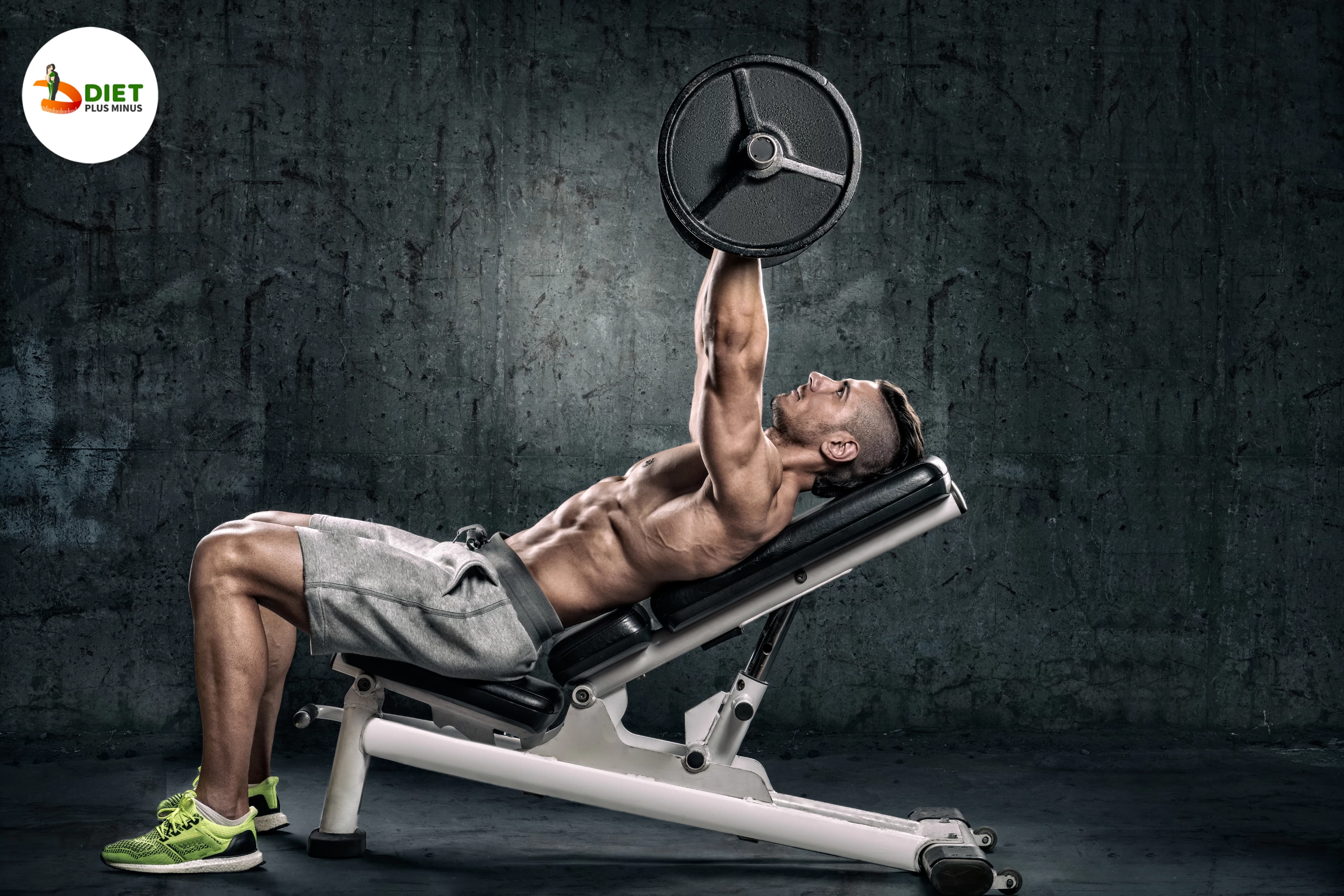Chest: Incline Dumbbell Press
What is the Incline Dumbbell Press?
The incline dumbbell press works the pectoralis major's clavicular head. This exercise requires a 30-45-degree adjustable bench and dumbbells. Lay on the bench with your feet on the ground and your back flat. Hold each dumbbell overhand and slightly touching above your chest. Inhale and slowly lower both arms to your sides until they reach a 90-degree angle or your elbows are parallel to your shoulders. Exhale and push both dumbbells back up to their starting position above your chest while contracting your chest muscles. Repeat 8-12 sets. Incline dumbbell presses improve shoulder stability, upper chest strength, and posture. For safety, keep your wrists straight and don't lock out at the top of each rep.
Muscles Involved: Which muscles are used?
Incline dumbbell presses work the upper chest well. Pectoralis major, anterior deltoids, and triceps are involved. Your chest is mostly pectoralis major. This muscle lifts weight from your shoulders during the incline dumbbell press. This exercise targets pecs and anterior deltoids. These front shoulders help with overhead movements like pressing weights. Finally, this exercise works your triceps. When you push weight away, these back-arm muscles extend them. Incline dumbbell presses can build muscle in these key muscle groups. Targeting multiple areas at once will maximise your workouts and improve results.
Benefits of Exercise: What are the benefits?
The incline dumbbell press can strengthen your chest. This exercise targets the upper chest, a common problem area. To sculpt your chest, strengthen and tone this area. The incline dumbbell press works your chest, shoulders, and triceps. This provides a more complete upper body workout. Compound movements burn more calories than isolation exercises for smaller muscle groups. Finally, regular exercise with this exercise can improve posture. Strengthened upper back muscles pull shoulders back and down towards the spine, aligning the upper body while standing or sitting. Incline dumbbell presses have many benefits!
Form and Technique: How to do it correctly?
Incline dumbbell presses work the upper chest. This exercise requires proper form and technique. First, lie on a bench with your back against it and your feet flat on the floor. Hold a dumbbell in each hand at shoulder level, palms facing forward, elbows bent. Slowly raise both dumbbells above your shoulders. Slowly lower them to shoulder level after pausing. Keep your elbows close to your body and don't arch your back. Try three sets of 8-12 reps with a weight that lets you maintain form for best results. Lift the weights while breathing deeply and contracting your chest muscles. Practice and attention to detail can improve your form and technique quickly!
Variations: Different forms of exercise
The incline dumbbell press targets the upper chest like the bench press. Lying on an incline bench with a dumbbell in each hand, palms forward, perform this exercise. Press the weights up and together until they meet above your chest, then slowly lower them back to starting position. This exercise targets different chest muscles with different incline levels. Push-ups, dips, cable flyes and machine presses are other chest exercises. Change hand placement or elevate feet to modify push-ups for beginners or advanced athletes. Dips target chest and triceps with parallel bars. Cable flyes hug trees and maintain tension. Weight stacks and adjustable seats control machine presses. Different exercises target different muscle groups from different angles, preventing boredom and plateauing. To avoid injury, consult a personal trainer or doctor before trying new exercises or modifications.
Weight and Repetitions: How much weight and reps?
In chest exercises like incline dumbbell press, weight and repetitions vary. Fitness, goals, and health determine weight and reps. Beginners can safely build strength with lighter weights and higher reps. Building muscle mass requires gradually increasing weight and decreasing reps. However, listen to your body and don't push too hard too soon. Choose a weight that challenges you but allows proper form. Muscle building requires 8-12 reps per set. If your goal is endurance or toning rather than bulking up, 15–20 reps with lighter weights may work better. Weight-rep balance depends on your fitness journey.
Considerations: Safety tips for best results
Safety is paramount when working out. Incorrectly performing the incline dumbbell press can strain your chest muscles and joints. Start with a comfortable weight and gradually increase it. To avoid injuries, keep your grip secure and use proper form during the exercise. Warming up before a workout, especially chest exercises, is crucial. Before starting, warm up with arm circles or push-ups. Safe workouts require adequate rest between sets. Take breaks and listen to your body. These tips will help you get the most out of incline dumbbell presses and other workouts without injuring yourself.
Conclusion: Final thoughts on the exercise
Finally, incline dumbbell press builds upper chest muscles well. It boosts upper body strength because it's a compound movement. This exercise increases strength and size. This exercise requires good form and technique. Injuries or slow progress can result from improper movement. Before increasing weight, master technique with lighter weights. The incline dumbbell press should be part of every chest workout, regardless of skill level. This exercise can boost upper body performance and muscle mass with consistent effort.
In Short:
Steps involved:
-
Position the bench between 30-45 degrees.
-
Lay flat on the bench positioning your feet on the ground.
-
Raise the dumbbells with straight arms and lower them in a controlled manner.
-
Raise them again until your arms are locked. Repeat.
Do’s:
-
Keep your lats tight and elbows slightly drawn in.
-
Keep full control of dumbbells and push the dumbbells with your chest.
-
Time taken to lower the weights should be around twice the time taken to lift the weight.
Don’ts:
-
Don’t keep the dumbbells back directly on the floor. First, place them on your thighs and then gently keep them on the floor.
-
Don’t grip the dumbbells loosely.

